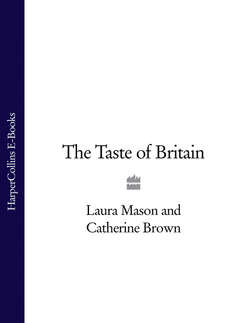Читать книгу The Taste of Britain - Hugh Fearnley-Whittingstall - Страница 235
HISTORY:
ОглавлениеThe Bedfordshire Clanger has undergone much change in the last century. Today it is a baked pasty (with a suet crust) which has 2 fillings rather than one. Savoury meat and something sweet sit at opposite ends of a baked pie. This does not seem to have been the original form. Clangers were once a boiled suet roll, like plum duff or roly-poly. The roll contained a meat filling, and the crust was itself studded with fruit. It became a sort of complete meal in one. Compilations of English country recipes show them to have been plain, substantial food for farm labourers and other manual workers. Suet pastry enclosed a filling which varied with the affluence of the family involved (Ayrton, 1982). The poor used the only meat which was readily available, bacon; richer families used good steak or pork. Similar dishes were made in other parts of central eastern England. Poulson (1977) mentions a bacon clanger, filled with bacon, sage and onion, from the Thames valley; a similar dish was known in Leicestershire as a Quorn bacon roll.
No-one has offered a derivation of clanger. Wright (1896-1905) cites ‘clang’ as a Northamptonshire dialect word meaning ‘to eat voraciously’. The Bedfordshire Clanger may have developed in response to local employment patterns (Mabey, 1978). Many women were employed in the straw-hat industry and the clanger, boiling slowly for hours unattended, was a complete hot meal for those arriving home from work. Clangers are now made because there is a local taste for them. There are even clanger-eating contests at local fairs and festivities. Clangers have now evolved into a baked dish. This reflects the evolution of British cooking methods away from long boiling to dry baking, more convenient once domestic gas or electric cookers were universally available. Old recipes sometimes called for the boiled rolls to be dried in a low oven before consumption.
